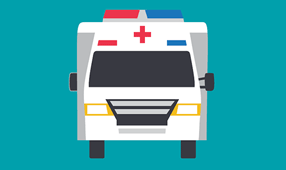In times of financial stress, payday loans can seem like an easy option to get cash fast. Unfortunately, quick access to money adds up in the long run. Each year, 12 million Americans borrow money that way, and they end up spending $9 billion on loan fees to do so, reports The Pew Charitable Trusts.
As shutdowns, furloughs and job losses due to the coronavirus pandemic continue to have a financial impact, more people may increasingly be tempted to consider these high-cost, high-risk loans.
In response to current events, several federal financial regulatory agencies issued joint guidance in March urging banks and credit unions to offer responsible, affordable small-dollar loans, rather than payday loans, to consumers. The announcement promises further guidance on continuing such loan activity.
There may be good reasons to explore these and other sources of more reputable lending before resorting to the payday industry, say consumer protection advocates. Read on to learn how to spot payday lenders, understand the risks of getting a payday loan, and consider some safer loan options.
What are payday loans?
Also known as “cash advance loans,” a “paycheck advance” or “payday advance loans,” payday loans are a way to cover a cash-flow shortfall between paychecks. You might need the money to help pay bills that come due before your next payday or to make necessary purchases that just can’t wait.
To qualify for a payday loan, all that’s commonly required is a valid ID, proof of income and a checking account.
Such loans are primarily offered by what’s known as “nonbank lenders,” meaning they are not done through traditional banks or credit unions. Depending on your state law, payday loans may be available through retail storefronts or online. The Community Financial Services Association of America—the trade group for the small-dollar lending industry—currently counts 32 companies as corporate members, some of which operate 100 or more locations across the U.S.
How do payday loans work?
Payday loans are typically for short-term, small-dollar amounts ranging from $100 to $1,000 and are due in full by the borrower’s next paycheck, usually within two or four weeks.
As a condition of the loan, borrowers post-date a personal check to coincide with their next paycheck or give the payday lender electronic access to debit the funds from their bank account. In addition, the borrower is expected to pay fees, which can end up being quite high, for the temporary loan.
When the due date arrives, borrowers can let the payday lender deposit the post-dated check, or they can extend and “roll over” the loan for another period, for which they’re charged additional fees and interest. That all continues to add up until the borrower is able to pay off the debt in full.
Even if borrowers do pay off their loan on time, without incurring any fees, they won’t get any credit for it on their credit score. Payday lenders don’t inform credit bureaus when borrowers have demonstrated good fiscal responsibility.
Are payday loans risky?
The Center for Responsible Lending (CRL), a nonprofit consumer group, believes the payday lending business structure can cause financial harm. Not only can developing a cycle of cash advance loans lead to a cascade of financial consequences for borrowers, but payday lenders also tend to be most prevalent in areas where many residents are less likely to qualify for mainstream loans or in primarily minority communities.
A CRL analysis, for example, found that payday lenders are nearly eight times as concentrated in neighborhoods with the largest shares of African Americans and Latinos as compared to white neighborhoods. This combination of imposing unfair and abusive loan terms and targeting vulnerable or underserved populations can amount to predatory lending, CRL contends.
Here are the other big risks associated with payday loans:
- You may be charged extremely high interest rates. Many state laws set a maximum amount for payday loan rates, ranging from $15 to $30 for every $100 borrowed. But a typical two-week payday loan with a $15 per $100 fee equates to an annual percentage rate (APR) of almost 400%. (By comparison, the national average APR on credit card accounts as of May 2020 is 15%, according to the Federal Reserve.)
- You may get stuck in a repeating cycle of debt. More than four out of five payday loans are re-borrowed within a month, and nearly one in four are renewed nine times or more, finds research by the Consumer Financial Protection Bureau (CFPB), which enforces federal consumer financial laws. The result is that nearly half of payday borrowers (48%) get stuck in a loop of more than 10 loan transactions a year, and they end up paying more in fees than they received in their cash advances.
- You may face bank, credit record and legal issues. Half of online payday advance borrowers rack up an average of $185 in bank penalties because at least one debit attempt overdrafts or fails, according to the CFPB. And 36% of those borrowers who had a failed debit attempt from an online payday lender ended up having their bank account closed involuntarily. On top of that, payday lenders can publish such negative issues on credit reports or refer cases to a collection agency or lawyer in an attempt to recover overdue funds.
What are some alternatives to payday loans?
First, consider whether you can avoid borrowing money at all. Could you find money through other sources of income, family resources, a side gig or by selling unused household items? These options might be more preferable than taking out a small loan.
You also can try contacting the companies you owe money to, such as your mortgage broker or utilities providers, if you think you might miss a payment due to insufficient funds. Many companies are offering temporary relief if your money constraints are directly related to coronavirus.
Same with banks and credit card issuers: In response to the COVID-19 pandemic, many have announced economic assistance for consumers who may temporarily need it—whether through late-payment fee waivers, payment deferrals or short-term hardship programs. Learn more about the assistance banks are offering now from this online list, compiled and updated by the American Bankers Association.
Be sure to also check for details about special assistance provided by NEA Member Benefits and our partners to NEA members in need.
If you do need financial assistance, consider these options:
- Dip into your emergency fund. If you’ve managed to build a cash buffer for unanticipated costs, using it to help cover a temporary money shortfall means you won’t be taking on new debt (and any related fees) to pay existing debt.
- See if your bank or credit union offers small-dollar consumer loans. Until recently, a lack of regulatory clarity prevented some traditional banks from offering small loans. But that appears destined to change, as the pandemic’s financial fallout is pushing them to adapt to consumers’ pressing needs. The nation’s top financial regulators are suggesting that banks and credit unions should offer a variety of loan structures that may include open-end lines of credit, closed-end installment loans or single payment loans. For consumers, that means better borrowing options coupled with higher standards for safety and affordability provided by federally insured institutions.
- Look for a lending circle. A newer option in small-dollar loans are lending circles, which offer interest-free loans facilitated by a community organization. For example, the nonprofit Mission Asset Fund manages many of these circles around the country, in which six to 12 people join together monthly to lend money to each other. Loans typically range from $300 to $2,400. Every month, one person receives the loan until everyone in the circle gets a chance. In addition, monthly payments are reported to credit bureaus to help circle members build or improve their credit scores.
- Turn to online crowdfunding in a pinch. While crowdfunding is often associated with business start-ups, some people are finding it a productive way to raise money for personal needs. Sites such as GoFundMe and GoGetFunding have helped raise significant sums to help pay bills and offer financial support. Before launching a crowdfunding campaign, compare the ease with which the sites’ online tools allow you to set up your fundraiser and share it on social media. And scrutinize the fine print concerning platform-hosting fees and payment-processing fees. Depending on the site, platform fees can range from zero to 4% of donations made, and payment processing through PayPal or WePay generally averages about 2.9%, which also is deducted from your donation total.
- Consider taking a cash advance on your credit card. This is another option for emergency cash, but they come with high costs. Essentially, it’s a loan from your credit card issuer, usually available via an ATM or by cashing a convenience check. Unlike with purchases you make with your card, cash advances have no grace period. Most credit card companies charge interest immediately, starting from the date you borrow the money. And because interest rates on cash advances can be twice as much as the rate you’re charged normally for making purchases with your card, you’ll want to pay off the cash-advance balance quickly.
- Tap into your insurance’s cash value. If you have a permanent life insurance policy (also called “whole life”), you can withdraw some of the cash value—up to the amount paid in premiums—tax free. Be aware though, that a withdrawal will reduce the death benefit. Alternatively, you can borrow against your policy. You’ll pay from about 6% to 8%, depending on market rates and whether the loan is fixed or variable. If you don’t repay the loan, or pay back only part of it, the balance will be deducted from your death benefit.
- Explore a home-equity line of credit (HELOC). If you’re a homeowner, and the value of your home exceeds any outstanding mortgage debt, you may be eligible for a home equity line of credit. With a HELOC, you can borrow up to your limit whenever you need the money. Interest rates right now are low—averaging about 5%—and you can make interest-only payments until the initial withdrawal period ends, typically after 10 years. Be aware of qualification requirements: Lenders will review your credit score, the amount of equity you have in your home, and your income.
- Consider a retirement-plan withdrawal as a last resort. Ordinarily, withdrawing money from retirement plan like a traditional IRA should be avoided, because you must pay taxes on the money, plus a 10% early-withdrawal penalty if you’re younger than age 59½. Economic relief measures due to the coronavirus pandemic, however, include provisions that ease the rules on such withdrawals—allowing withdrawals that are more than usual, earlier than usual, and without penalty for people affected by the crisis.
What if I’m a victim of predatory lending?
Recognizing predatory lending isn’t always easy or obvious, according to an audit report of FDIC guidance relating to the practice. Acknowledging that there is no “simple checklist” to follow, the report does, however, identify 21 characteristics that are potentially associated with predatory lending—a list that includes the payday model. If you or someone you know is having trouble with a payday lending arrangement or believes they’ve fallen prey to an unscrupulous lender, try these steps to find relief:
- Review state law and licensing. The National Conference of State Legislatures maintains an up-to-date listing of state laws regarding payday lending. Review the terms for your state carefully. If a lender is unlicensed or its agreement doesn’t follow the rules, you may be entitled to loan cancellation and a refund of money paid. Many states also cap interest rates and require payday lenders to offer extended repayment plans to borrowers.
- Rescind authorizations. According to the CFPB, consumers can stop electronic debits from their accounts by revoking the payment authorization (often called the ACH authorization) that was required at the time the loan was taken out. You can also notify your bank that you want to put a “stop payment order” in place, which ends automatic payments from being charged to your account. Note: These actions won’t settle amounts owed, but they will end the lender’s debit cycle and allow you to make other pay-off arrangements.
- File a complaint. The CFPB received 2,100 payday loan complaints in 2019, and the companies involved responded to 91% of them. Review a lender’s record in the CFPB’s complaint database, or file a complaint if you’re having trouble with a lender’s loan practices. Complaints to the CFPB can be filed online, or by calling (855) 411-2372. You may also want to contact your state’s bank regulator or state attorney general’s office.












